Abstract
Bacillus thuringiensis spores and parasporal crystals were incubated in natural soil, both in the laboratory and in nature. During the first 2 weeks, the spore count decreased by approximately 1 log. Thereafter, the number of spore CFU remained constant for at least 8 months. B. thuringiensis did not lose its ability to make the parasporal crystals during its residence in soil. Spore survival was similar for a commercial spore-crystal preparation (the insecticide) and for laboratory-grown spores. In contrast to these results, spores that were produced in situ in soil through multiplication of added vegetative cells survived for only a short time. For spore additions to soil, variations in soil pH had little effect on survival for those spores that survived the first 2 weeks of incubation. Also without effect were various pretreatments of the spores before incubation in soil or nutritional amendment or desiccation of the soil. Remoistening of a desiccated soil, however, caused a decrease in spore numbers. Spores incubated in soil in the field did not show this, but the degree of soil desiccation in nature probably never reached that for the laboratory samples. The good survival of B. thuringiensis spores after the first 2 weeks in soil seemed to be a result of their inability to germinate in soil. We found no evidence for the hypothesis that rapid germination ability for spores in soil conferred a survival advantage.
Full text
PDF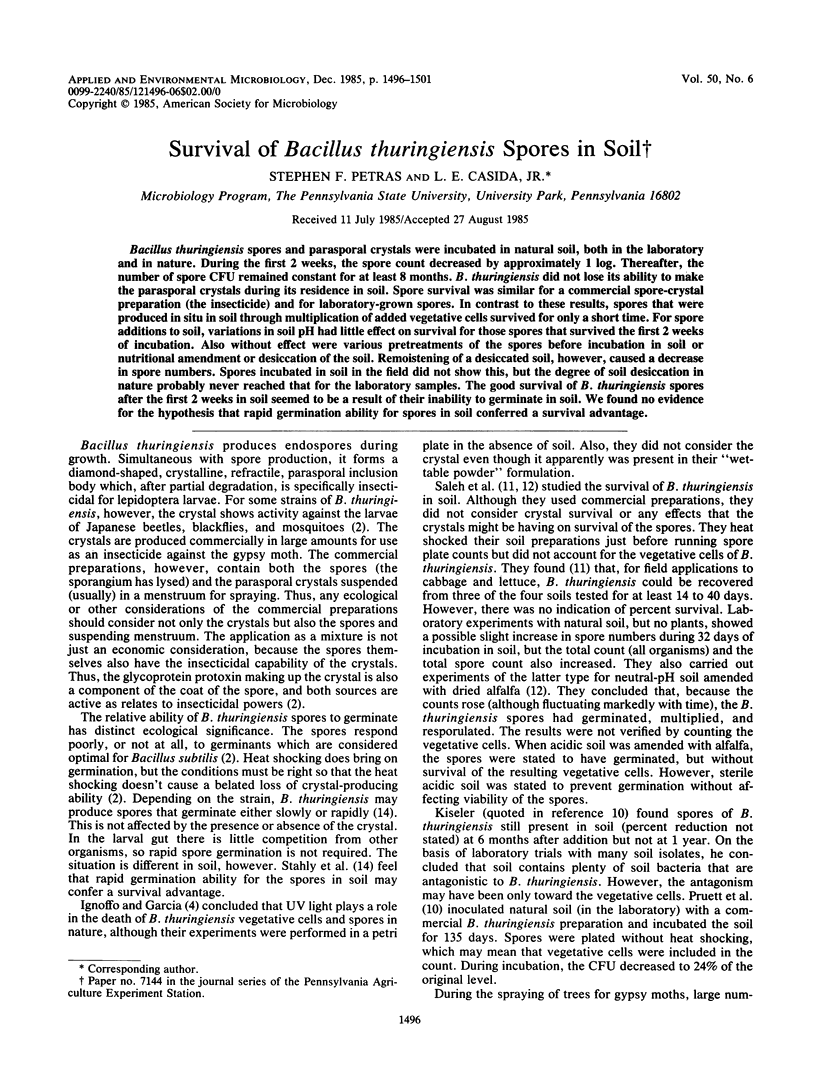
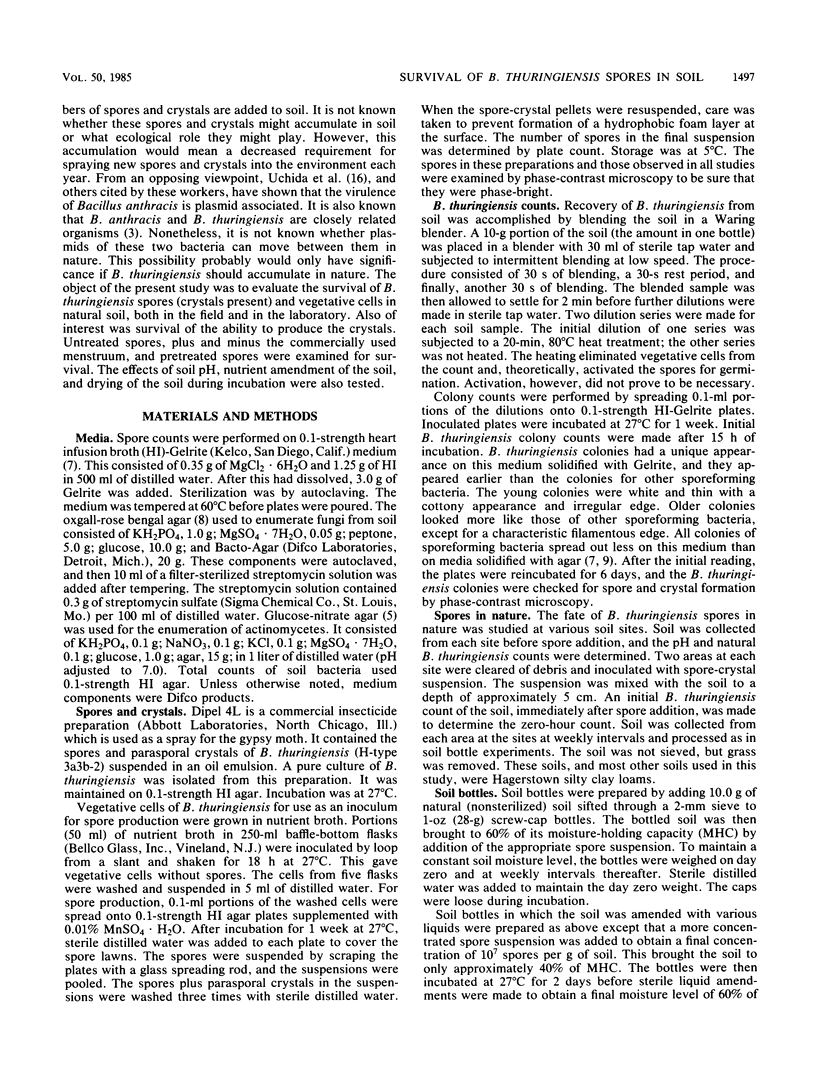
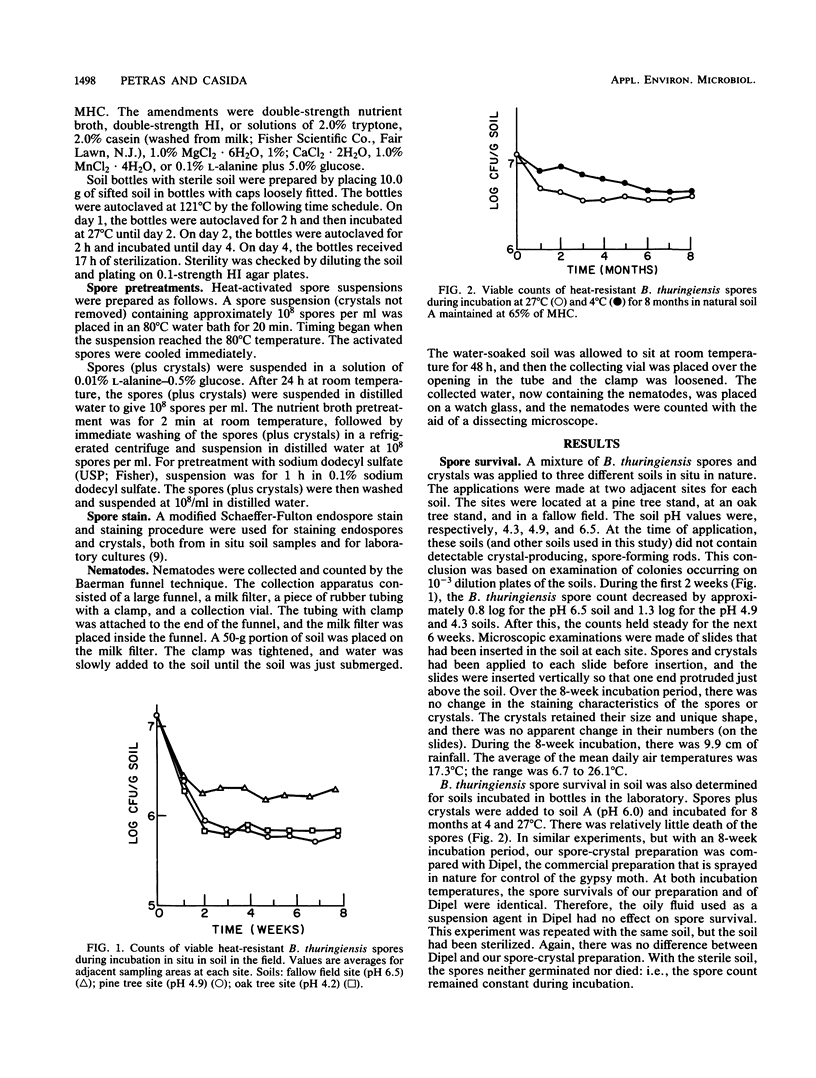
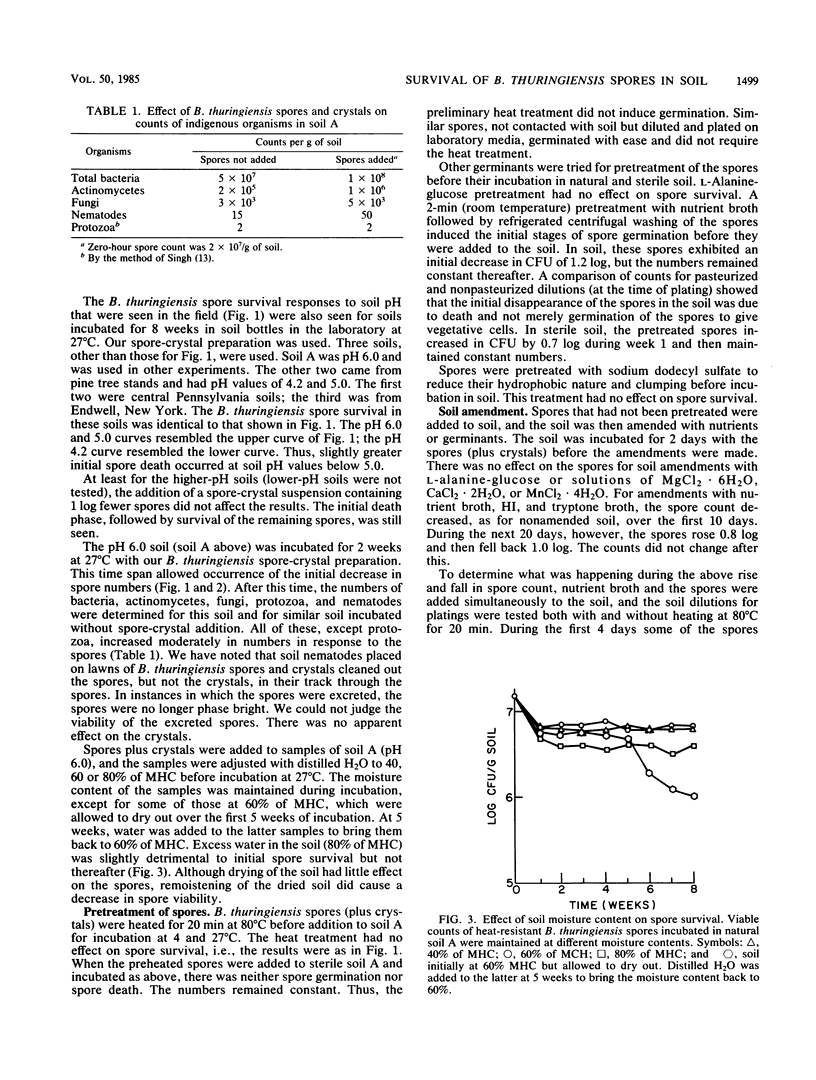
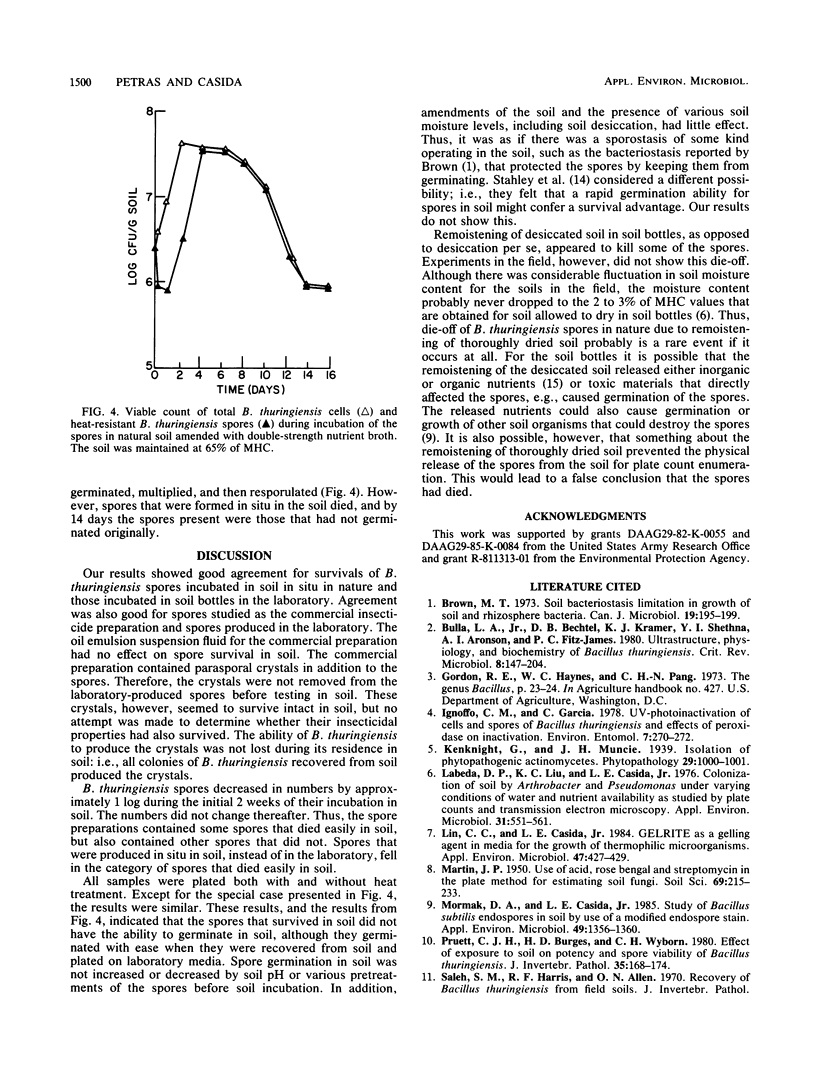
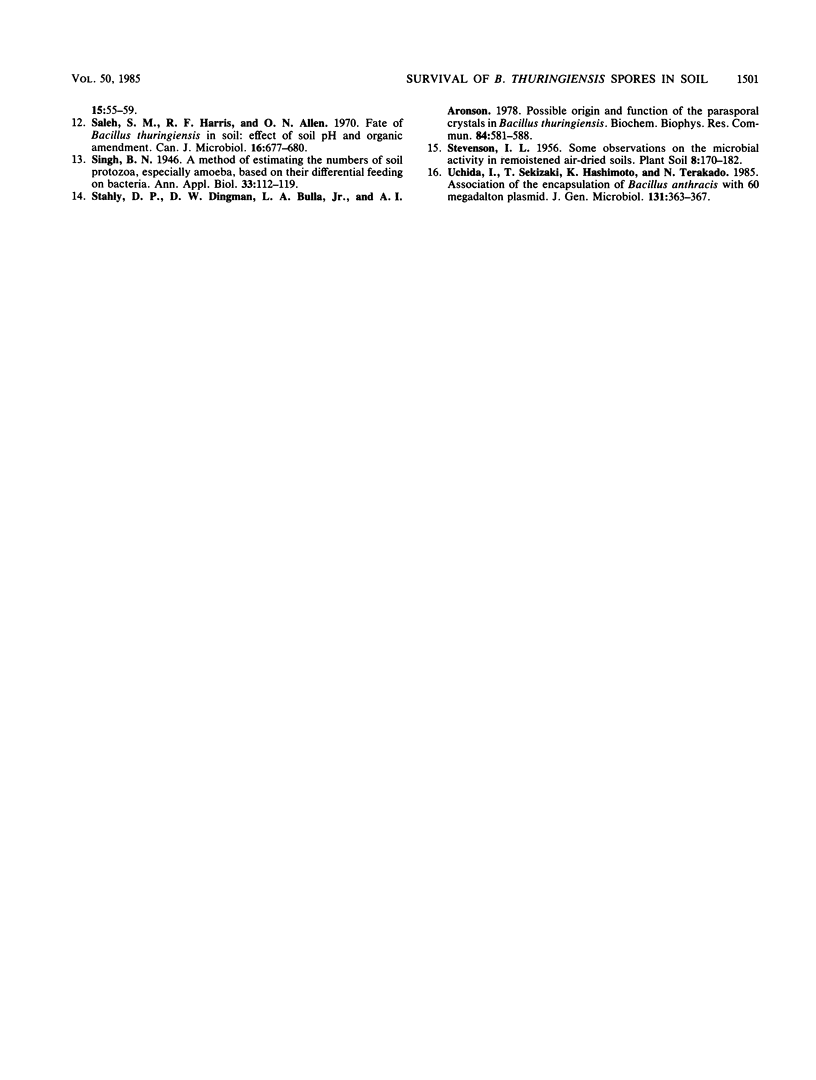
Selected References
These references are in PubMed. This may not be the complete list of references from this article.
- Brown M. E. Soil bacteriostasis limitation in growth of soil and rhizosphere bacteria. Can J Microbiol. 1973 Feb;19(2):195–199. doi: 10.1139/m73-030. [DOI] [PubMed] [Google Scholar]
- Bulla L. A., Jr, Bechtel D. B., Kramer K. J., Shethna Y. I., Aronson A. I., Fitz-James P. C. Ultrastructure, physiology, and biochemistry of Bacillus thuringiensis. Crit Rev Microbiol. 1980;8(2):147–204. doi: 10.3109/10408418009081124. [DOI] [PubMed] [Google Scholar]
- Labeda D. P., Liu K. C., Casida L. E., Jr Colonization of soil by Arthrobacter and Pseudomonas under varying conditions of water and nutrient availability as studied by plate counts and transmission electron microscopy. Appl Environ Microbiol. 1976 Apr;31(4):551–561. doi: 10.1128/aem.31.4.551-561.1976. [DOI] [PMC free article] [PubMed] [Google Scholar]
- Lin C. C., Casida L. E. GELRITE as a Gelling Agent in Media for the Growth of Thermophilic Microorganisms. Appl Environ Microbiol. 1984 Feb;47(2):427–429. doi: 10.1128/aem.47.2.427-429.1984. [DOI] [PMC free article] [PubMed] [Google Scholar]
- Mormak D. A., Casida L. E. Study of Bacillus subtilis Endospores in Soil by Use of a Modified Endospore Stain. Appl Environ Microbiol. 1985 Jun;49(6):1356–1360. doi: 10.1128/aem.49.6.1356-1360.1985. [DOI] [PMC free article] [PubMed] [Google Scholar]
- Saleh S. M., Harris R. F., Allen O. N. Fate of Bacillus thuringiensis in soil: effect of soil pH and organic amendment. Can J Microbiol. 1970 Aug;16(8):677–680. doi: 10.1139/m70-116. [DOI] [PubMed] [Google Scholar]
- Saleh S. M., Harris R. F., Allen O. N. Recovery of Bacillus thuringiensis var. thuringiensis from field soils. J Invertebr Pathol. 1970 Jan;15(1):55–59. doi: 10.1016/0022-2011(70)90098-4. [DOI] [PubMed] [Google Scholar]
- Stahly D. P., Dingman D. W., Bulla L. A., Jr, Aronson A. I. Possible origin and function of the parasporal crystal in Bacillus thuringiensis. Biochem Biophys Res Commun. 1978 Oct 16;84(3):581–588. doi: 10.1016/0006-291x(78)90745-3. [DOI] [PubMed] [Google Scholar]
- Uchida I., Sekizaki T., Hashimoto K., Terakado N. Association of the encapsulation of Bacillus anthracis with a 60 megadalton plasmid. J Gen Microbiol. 1985 Feb;131(2):363–367. doi: 10.1099/00221287-131-2-363. [DOI] [PubMed] [Google Scholar]


